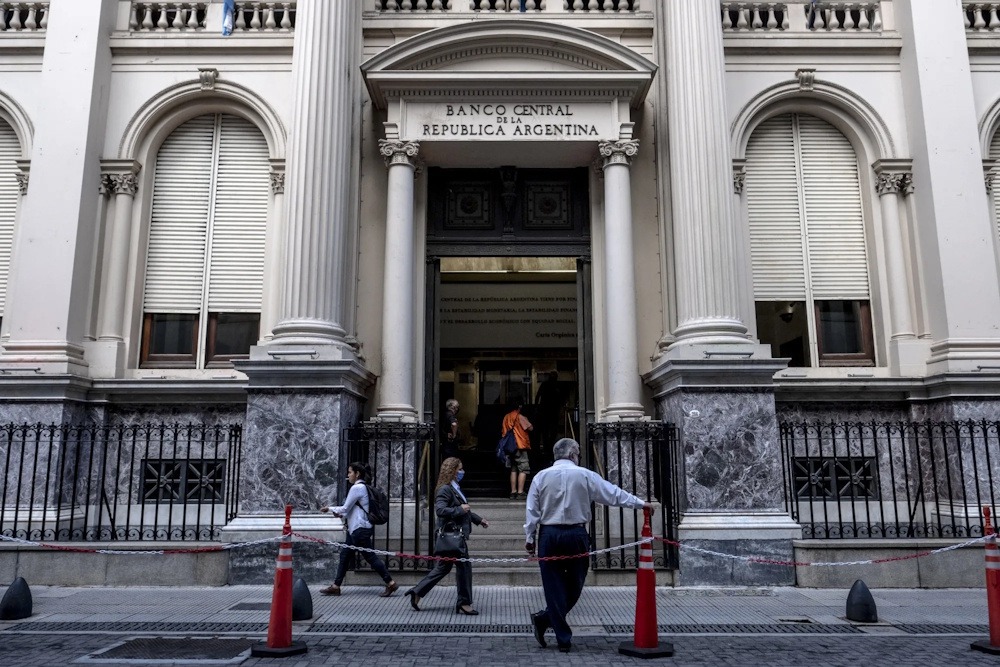On Wednesday, Argentina’s Central Bank intervened in the foreign exchange market by selling US$53 million to support the peso. The exchange rate concluded at AR$1,474.5, reflecting an increase of over 5 pesos compared to Tuesday. The monetary authority has refrained from intervening in the exchange rate since April 11, when it transitioned from a crawling peg, characterized by daily microdevaluations, to a banded exchange rate system.
The economic team of the Milei administration revealed that the transition occurred simultaneously with the approval of a US$20 billion loan from the International Monetary Fund. The mechanism permits the U.S. dollar to oscillate between two values, with the Central Bank intervening to purchase or sell dollars solely to maintain the exchange rate within the designated lower and upper bands. On Wednesday, the upper limit of the band was AR$1,474.5. Gross international reserves concluded at US$39.7 billion, reflecting a decrease of US$100 million compared to Tuesday. On the same day, released data indicating that in the second quarter of the year, GDP contracted by 0.1%, accompanied by a decline in private consumption of 1.1%. The year-on-year growth rate stood at 6.3%. In August, the monthly wholesale inflation rate registered at 3.1%, exceeding the consumer price index by a full percentage point as reported last week.
Shortly after noon, traders observed offers at AR$1,474.5, followed by AR$1,474, which they suspected originated from the Central Bank. “It was bound to happen eventually,” remarked a trader, who requested to remain unnamed. “There’s too much time left before the elections on October 26.” It is indeed a challenging time. Under this scheme, challenges are likely to arise. On September 2, in the context of heightened exchange rate volatility, the Argentine government declared that the Treasury would engage in the currency market. With a firepower then estimated at just 1.7 billion dollars, the move aimed at preventing the dollar from reaching the upper limit of the currency band, which would trigger Central Bank intervention. Christian Buteler, stated that upholding the band’s upper limit is “the right thing to do until the exchange rate system is modified.” He criticized the Treasury for having “burned through” US$500 million over the course of four days, before the exchange rate crossed the threshold, a move he said had “the sole purpose of looking ‘better’ going into the elections, which they then lost.”
Anticipations of heightened exchange rate tensions are prevalent as the October 26 national legislative elections approach. On Wednesday, Joaquín Cottani, who held the position of economy vice-minister until his resignation in July 2024, stated that the administration would “use IMF reserves to stop the run” on the peso. “There is no possibility of sustaining the currency exchange regime in either the short or medium term,” he stated. “It is difficult to conceive that, following the elections, there will not be a shift towards a conventional monetary policy aimed at regulating interest rates.” Cottani expressed his confusion regarding the currency band and criticized the administration’s initial economic strategy for its inability to build international reserves. “This does not align with the principles outlined in any monetary economics textbook,” he added.

